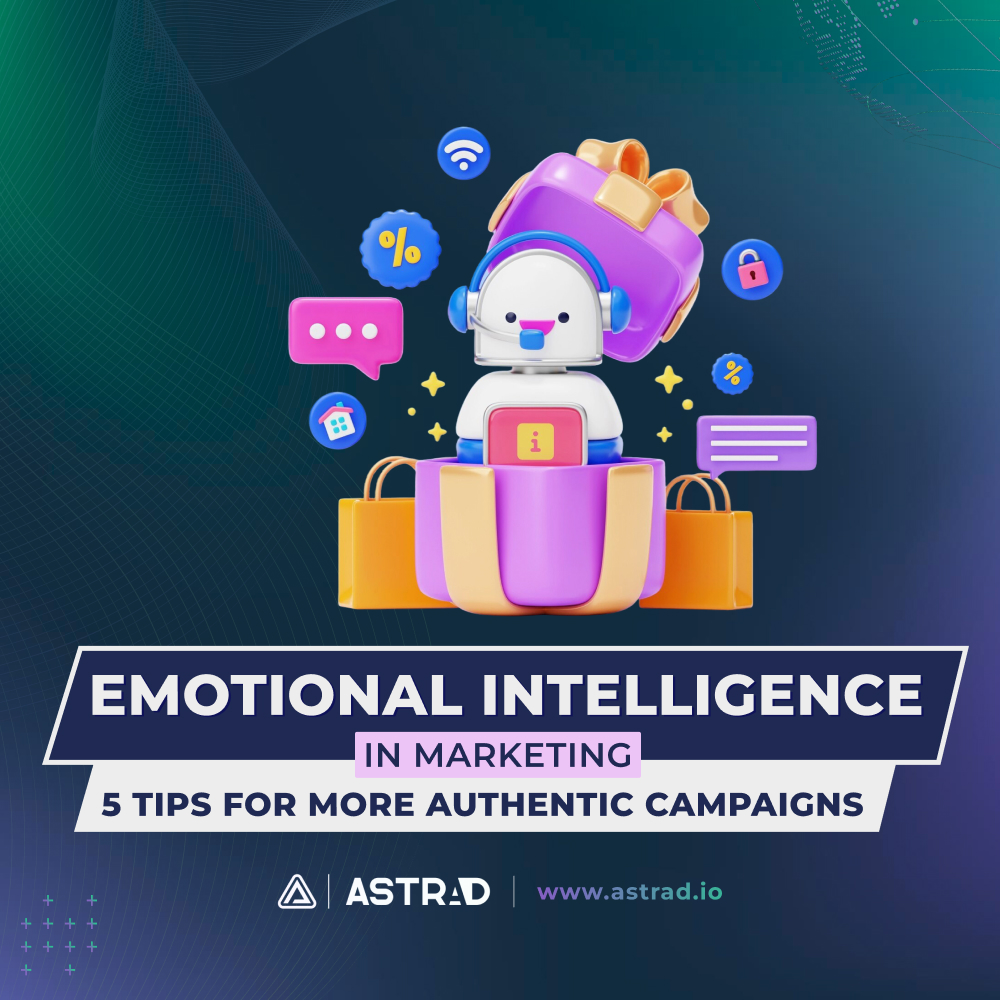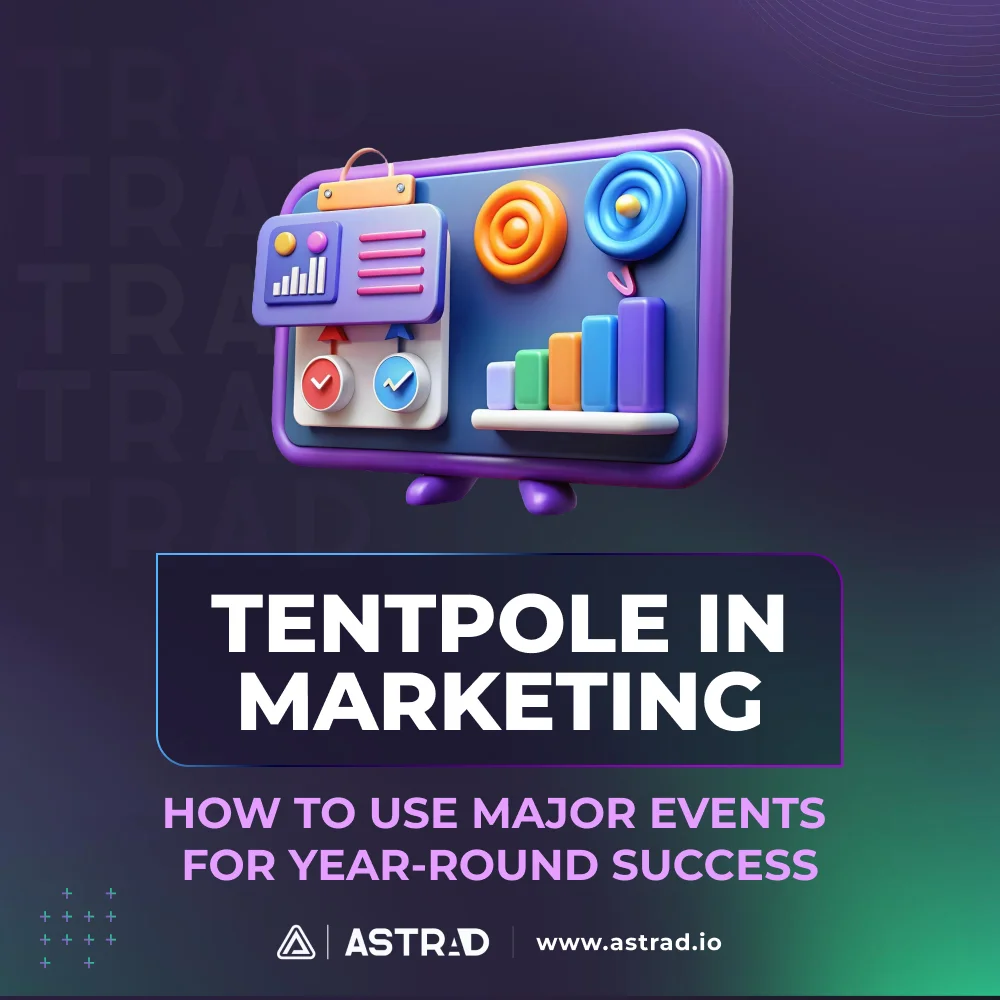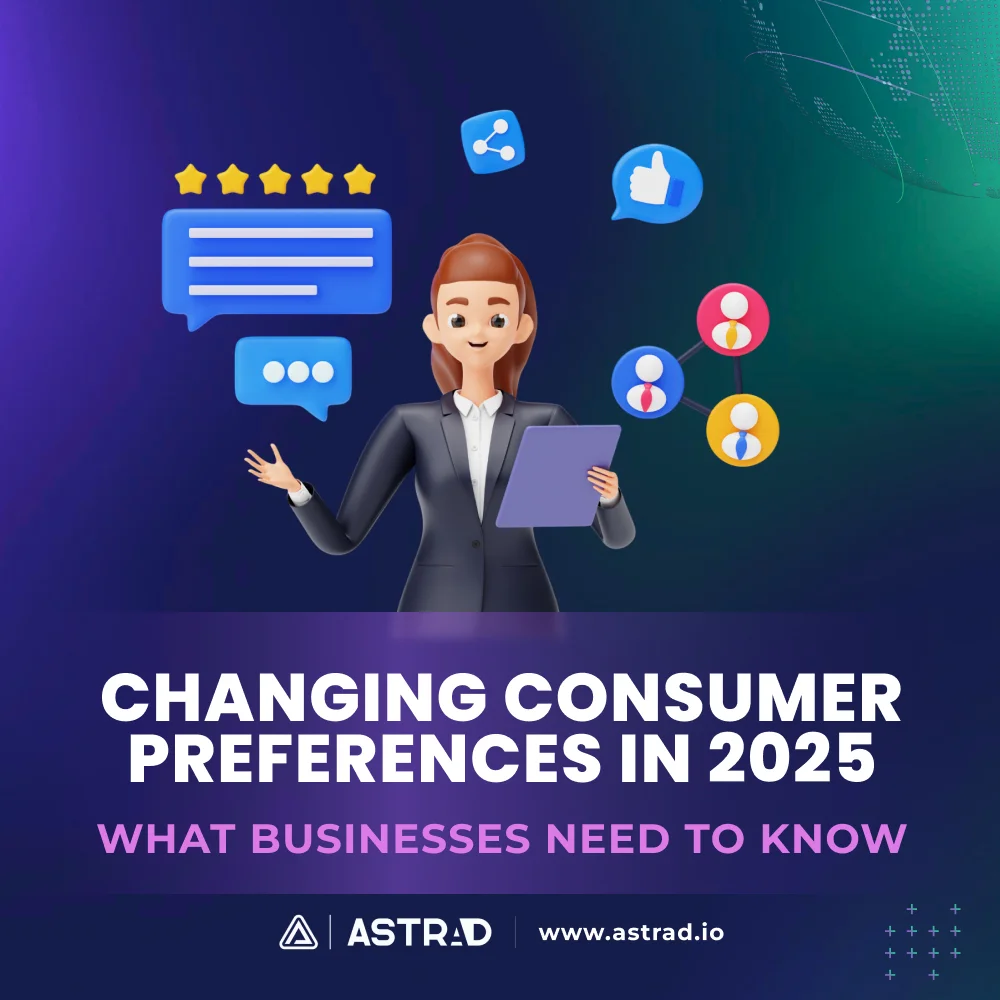Remember when marketing was all about who could make the catchiest jingle or the flashiest ad? Those days are long gone. In today’s world, where consumers are bombarded with endless choices, something deeper is happening – people aren’t just buying products anymore, they’re buying into stories, emotions, and values. This is where emotional intelligence in marketing really shines. When brands truly understand what makes their customers tick – their hopes, fears, and dreams – they create campaigns that don’t just sell, but truly resonate.
Think about how much our world has changed with digital and social media. Every single brand interaction, whether it’s a Facebook ad popping up in your feed or a customer service email landing in your inbox, is a chance to make a real connection.
Harvard Business Review discovered something fascinating – customers who feel emotionally connected to a brand are worth more than 50% more than those who are just satisfied with what they bought. Smart companies that embrace emotional intelligence in sales and marketing aren’t just pushing information – they’re inspiring action and building relationships that last.
Let’s dive into how brands can move beyond just selling stuff and create genuine connections that matter.
What Is Emotional Intelligence (EI) and Why Does It Matter in Marketing?
Here’s what emotional intelligence (EI) really means – it’s about being able to read the room, both in terms of your own emotions and everyone else’s. In everyday life, EI helps us navigate conversations, make better decisions, and build stronger relationships. In marketing? It’s the secret sauce that helps brands create messages that actually mean something to people.
A study by Capgemini found that 70% of emotionally engaged consumers spend up to twice as much on brands they feel a connection with. However, only 15% of companies effectively use emotional intelligence to connect with their audience. This gap presents a great opportunity for brands that embrace emotional intelligence marketing strategies to stand out and build lasting relationships.
How Emotional Intelligence Applies to Marketing
When you really get what makes your customers tick, marketing becomes less about shouting features and more about addressing what people actually care about. Here’s how emotional intelligence transforms marketing:
- Really getting those customer emotions and pain points: When brands truly understand what keeps their customers up at night, their messages hit home in a way that generic advertising never could.
- Building trust through keeping it real: Let’s face it – people are way more likely to engage with brands that shoot straight and show some humanity.
- Making things personal in a way that matters: When you tailor experiences to individual needs, customers feel seen and understood.
The Link Between Emotional Intelligence and Customer Loyalty
Brands that use emotional storytelling create stronger emotional bonds with their customers. For example, Apple doesn’t just sell tech; it sells innovation, inspiration, and individuality. Dove, through its “Real Beauty” campaign, has successfully built emotional connections by promoting body positivity and inclusivity. These brands understand that emotional resonance leads to brand loyalty and advocacy.
The Role of Emotional Intelligence in Sales and Marketing
Marketing and sales aren’t just about moving products anymore – they’re about building relationships that last. When someone’s making a purchase that really matters to them, companies need to understand all the emotions in play – the hopes, the fears, the “what ifs” – to create messages that actually move people to action.
How Emotional Intelligence Changes the Game
- Creating ads that actually connect: When you consider how people feel, not just what they think, your campaigns hit differently.
- Making sales conversations more human: Sales teams that use emotional intelligence in marketing read the room better, build trust faster, and close deals more naturally.
- Keeping customers around through better communication: When brands actually listen and respond with empathy, people notice and stick around.
5 Tips for Using Emotional Intelligence in Marketing
Tip #1: Use Empathy to Understand Customer Needs and Pain Points
Think of empathy as your marketing superpower. It’s not just about knowing who your customers are – it’s about truly getting what makes them tick. When you really understand people’s emotions, your campaigns stop feeling like marketing and start feeling like conversations.
Getting empathy right in your marketing:
- You’ve got to get out there and actually talk to your customers – run those surveys, do those interviews, get the real story about what bugs them and what they’re struggling with.
- Keep your finger on the pulse of social media – that’s where people share their raw, unfiltered thoughts about their challenges.
- Flip the script on your messaging – instead of rambling about features, show people how you’re making their lives better.
Example – how Dove and Apple use empathy:
Look at what Dove and Apple are doing – they’ve nailed it. Dove’s Real Beauty campaign hits home because they’re addressing something real – the complicated relationship many women have with beauty standards. Meanwhile, Apple’s not just selling gadgets; they’re selling the feeling of being creative and unique. Both brands get it – they understand what their customers actually care about.
Tip #2: Leverage Storytelling to Create Emotionally Compelling Campaigns
Here’s the thing about good stories—they don’t just capture attention; they stay with people. When emotional intelligence meets powerful storytelling, marketing goes from something people scroll past to something they remember, share, and connect with.
Crafting stories that connect:
- Dig deep into real customer experiences—nothing beats the authenticity of real struggles, victories, and transformations. People see themselves in those stories.
- Play with those emotional heartstrings—make people laugh, bring them nostalgia, inspire them, or even challenge them. Emotion makes marketing stick.
- Don’t just tell people how great your brand is—show them through real customer stories, raw behind-the-scenes moments, and compelling visuals that spark connection.
Example – Nike’s emotionally driven marketing:
Nike has mastered emotional storytelling. Their ads aren’t about selling shoes; they’re about something much bigger—the drive to push past limits. When they showcase an athlete grinding through pain and exhaustion to reach greatness, that resonates. It’s not just an ad; it’s motivation. That’s why their campaigns don’t just sell products; they build movements.
Tip #3: Personalize Customer Interactions for Deeper Engagement
Forget basic email personalization—real personalization is about making every interaction feel intentional, relevant, and almost effortlessly tailored to the customer. The best brands make people feel like their messages, offers, and recommendations were made just for them.
Making it personal:
- Use customer data wisely—go beyond the obvious and figure out what really interests them, then serve content, offers, and experiences that actually matter to them.
- Let smart tech do the heavy lifting—AI-driven recommendations can match the right products with the right people at exactly the right time.
- Segment your audience strategically—base it on behaviors, interests, and interactions rather than generic demographics. A personal touch is about relevance, not just names in subject lines.
Example – how Netflix and Amazon use personalization:
Look at Netflix and Amazon—they’ve turned personalization into an art form. Their recommendations feel almost psychic at times. That’s because they’re paying attention—not just to what customers say they want but to how they actually behave. They track patterns, analyze habits, and adjust in real-time. The result? Content and product recommendations that feel effortless yet incredibly spot-on.
Tip #4: Humanize Your Brand Through Authentic Communication
People can spot inauthenticity from a mile away. The most successful brands aren’t the ones with the most polished messaging—they’re the ones that feel real. A brand that stands by its values, engages with people like humans, and lets personality shine through is the one that builds deep, lasting trust.
Keeping it real:
- Don’t just have values—live them. Show the world what your brand stands for in action, not just in mission statements.
- Engage with your audience like they’re real people. Respond to comments, answer questions, and create conversations that feel genuine, not robotic.
- Pull back the curtain sometimes. Show the faces behind the brand. Let people in on the process, the challenges, and the passion behind what’s being built.
Example: how Patagonia’s authentic branding builds trust:
Take Patagonia—they don’t just talk about sustainability; they embody it in everything they do. From repairing customers’ worn-out gear for free to pledging 1% of their revenue to environmental causes, they make sure their mission isn’t just a slogan—it’s a lifestyle. That’s why their customers don’t just buy their products—they buy into their purpose.
Tip #5: Align Emotional Intelligence with Customer Feedback and Continuous Improvement
Collecting feedback is one thing, but knowing how to decode it and act on it strategically is what separates good brands from great ones. Emotional intelligence allows brands to read between the lines, understand customer emotions, and continuously evolve to meet expectations.
Making feedback count:
- Look beyond just words—analyze the emotions behind customer feedback. Are people frustrated? Excited? Confused? The tone of feedback often speaks louder than the words themselves.
- Actually, use the insights to improve. Too many brands gather feedback but do nothing with it. The best ones pivot, tweak, and evolve based on what their customers are telling them.
- Adapt based on real behavior, not just stated preferences. Customers may say they want one thing but act differently. Observing actual behavioral patterns is key to refining strategies.
Example: how Starbucks uses customer feedback:
Starbucks doesn’t just collect feedback—it actively shapes its offerings based on what customers want. Seasonal drink menus, mobile app improvements, and even store layout adjustments come from analyzing customer preferences and behaviors. That’s why buying coffee from Starbucks doesn’t feel like a simple transaction—it feels like part of a routine, a habit, an experience.
Bringing It All Together
Emotional intelligence in sales and marketing isn’t optional anymore – it’s essential for brands that want to build connections that last. When you combine genuine empathy, powerful storytelling, real personalization, authentic communication, and active listening, you’re not just marketing – you’re creating experiences that matter.
Think about it – the most successful brands today aren’t just pushing products. They’re building communities, starting movements, and creating connections that stand the test of time. Companies that master emotional intelligence marketing strategy understand something crucial – in a world where consumers have endless choices, the brands that truly connect with people’s emotions are the ones that thrive.
Remember, marketing is ultimately about connecting humans with humans. The technical stuff matters, sure, but it’s the emotional intelligence that turns casual customers into loyal fans. When brands get this right, they don’t just make sales – they make a real difference in people’s lives.






